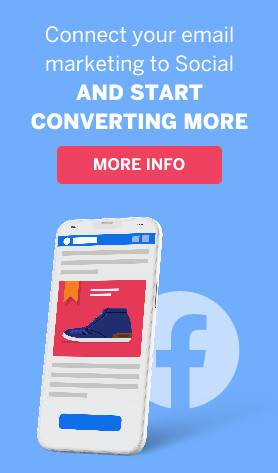Email Marketing Best Practices to Adopt in 2018 and Beyond
In the digital landscape where everything evolves so fast, your profitable strategies today can become irrelevant tomorrow. But through the years, one thing remains certain – email is still king.
Up to 31% of B2B marketers said that email marketing has the biggest impact on revenue, making it as their most effective digital marketing strategy. Email is also considered effective in customer retention with 56% of marketers agreeing on this.
Many email marketing best practices have emerged in 2017, but not all will survive in the coming years. So, keep up with the fast-changing digital trends. We’ve compiled the best practices in email marketing that will help you go through the next year and beyond.
Mobile Optimization
- Smartphones allow people to perform tasks on mobile, including reading emails.
- About 68% of email opens were done on a mobile device in the second quarter of 2015. (Business2Community)
Tips
- Write subject lines with up to 25 – 30 characters only.
- Keep email content short and sweet.
- Put CTAs in front or at the center.
- Plan an “image off” experience.
- Test your email on different devices.
If your emails are still not optimized for mobile, you are being left behind. Statistics show that about 68% of email opens were done on a mobile device, and 52% of those were opened on smartphones in the second quarter of 2015.
To optimize your email for mobile, start with your subject line. Mobile devices can only show up to 25 to 30 characters for the subject line compared to desktop. It is strategic to keep your email content concise because the mobile device screen is smaller. For your CTA, it’s best to put it in front or at the center where it’s more noticeable.
Since not all mobile devices can display email images, you might want to plan an “image off” experience so that your email does not look like trash without images.
Interactive Emails
- Interactive emails boost engagement and click-through rate.
- More companies are starting to support interactive emails like Gmail.
Tips
- Use a slideshow to show multiple products or services.
- Use signposting copy or graphics like arrows.
- Test your interactive email as some email companies do not support interactivity.
Your email is like your website. The more interactive it is, the better engagement it receives.
Good thing, more email companies like Gmail are beginning to support interactive emails, allowing businesses to profit from interactivity. This is because interactive emails are catchier and can boost customer engagement such as click-through rate, which is essential to getting conversions.
To make your email interactive, you can use a slideshow or a carousel to show multiple products or services to customers. You can use signposting copy or graphics like arrows. Before sending out to customers, be sure to test your interactive email to see how it will appear to customers.
Drip Campaigns with Personalization
- Drip marketing can generate 80% more sales at 33% lower costs. (MarTech)
- Personalized emails can generate 6 times higher transactions rates. (Experian)
- Personalized emails receive 29% more unique open rates and 41% higher click-through rates. (Experian)
Tip
- Use demographics, transaction records, engagement level, and online behavior as a guide in personalizing drip campaigns.
- Send trigger emails based on a certain action.
Drip campaign has been proven to be an effective email marketing practice, generating up to 80% more sales at 33% lower costs. You can strengthen this strategy further when you leverage customer data to achieve personalization.
Remember, no one wants to read irrelevant emails. Anything irrelevant to your recipients will go to the trash folder. So, send targeted emails with personalized content based on your demographics, transaction records, engagement level, and online behavior as a guide in personalizing drip campaigns. You can also set triggers in which customers receive a personalized email after performing a certain action.
Email List Segmentation
- An important step in sending targeted, personalized emails.
Tips
- Segment your email list based on:
- Demographics
- Geolocation
- Buyer’s Journey
- Past transactions
- Email activity
Segmenting your email list is one of the most important steps in sending targeted, personalized emails to customers. You have many ways to nail your segmentation. The most basic ways are using demographics such as age and gender. You can also segment contacts based on where they live so you could include their location in the email.
The buyer’s journey (awareness, consideration, decision, and loyalty) can guide you on what messages are most effective for each segment. You can also group contacts that are more engaged and contacts that need more nurturing based on their email activity and past transactions.
Social Media Integration
- Integrating email and social media strategies can grow your email list and social media audience.
Tips
- Invite your social media audience to sign up for your email updates.
- Use retargeting ads for recipients who engaged in your email.
- Put clickable social media icons in your emails.
- Encourage recipients to share your email content with their social media friends.
Beef up your email marketing tactic by integrating it with your social media assets to increase subscribers and boost engagement. You can start by inviting your social media followers to sign up for your e-newsletters or email updates. If they are really interested in your business, this can give you a decent number of new subscribers.
Nurture customers who open, click and engage in your email with retargeting ads. Clickable social media icons can drive your email recipients to your social media pages while sharing buttons in your email can encourage recipients to share your email content with their social media connections.
Trends come and go, but the best ones often stay. Follow these email marketing best practices and break a leg in 2018 and the coming years!
Read more:


